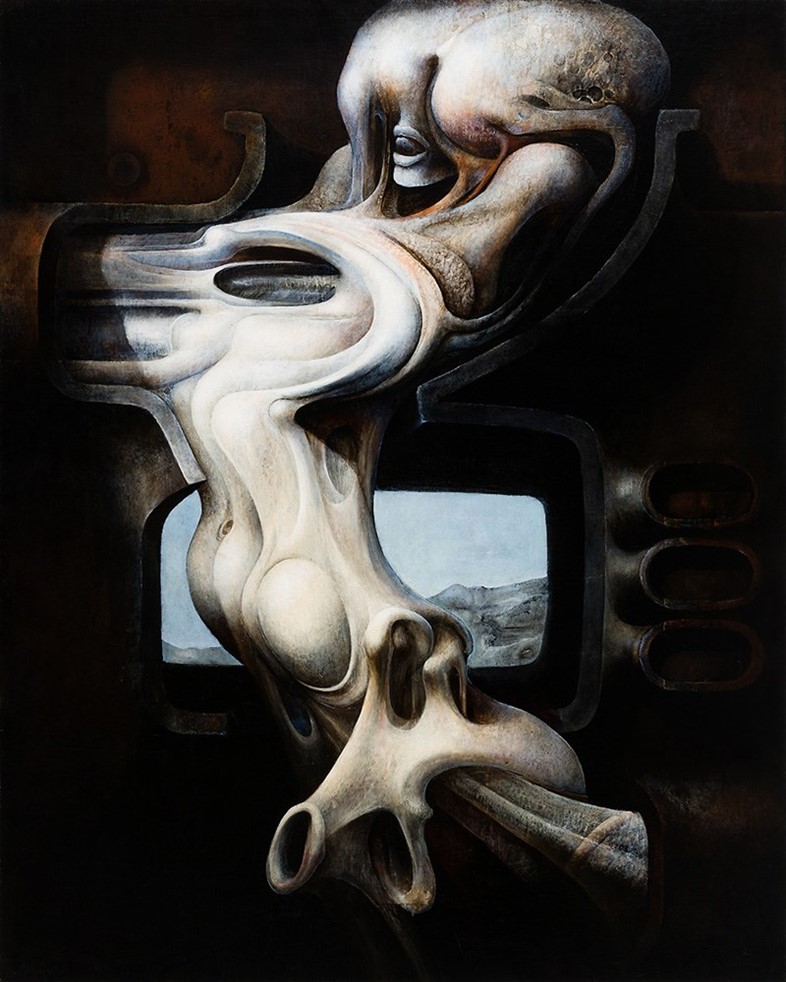
Artists Explore the Creation and Influence of Human-Made Monsters

**Among Monsters: Exploring Fear, Mythology, and Cultural Insights through Art**
*SANTA FE* — Monsters, with their eerie and often fearsome qualities, have fascinated humanity for centuries, serving as symbolic representations of human anxieties, desires, and cultural narratives. The recent exhibition *Among Monsters*, currently on display at Gerald Peters Contemporary in Santa Fe, New Mexico, channels these myths and imaginings through the captivating works of six artists: Nani Chacon, Esther Elia, Angelica Raquel, Gil Rocha, Peter Rogers, and Hank Saxe.
The exhibition explores the concept of monstrosity in a broad context—interweaving themes such as power, fear, fantasy, protection, and the supernatural. The show provides viewers with deep, immersive experiences as they move from room to room, with each artist contributing their unique perspective on what it means to encounter or embody a “monster.” The works span multiple mediums, from large-scale figurative sculptures to intricate felted creatures, uniting diverse interpretations under a common theme: the monsters in our lives.
### Embracing Powerful Goddesses and Cultural Diaspora
One standout artist, Esther Elia, draws from ancient Assyrian culture while tapping into modern ideas of strength and body image. Elia’s monumental sculptures of female bodybuilders merge with inspirations from ancient mythological figures like the *lamassu*, which are protective deities from Mesopotamian lore. Her striking work “Miztanta Protective Deity” (2023) combines these ancient forms with a very contemporary twist—celebrating the online phenomenon of Assyrian women sharing their bodybuilding journeys. The combination of colorful Mexican tiles and the bodybuilder’s formidable stature challenges societal notions of female strength, blending the traditional and the modern.
Elia’s exploration pulls the viewer into conversations about physicality, safety, and the often overlooked experiences of Assyrians in diaspora, particularly women. Her art defines monsters not just as mythical creatures but also as societal pressures or internal struggles derived from displacement, heritage, and identity.
### Hybrid Creatures and Folklore Come Alive
Angelica Raquel’s contribution to *Among Monsters* takes the form of hybrid creatures that balance between the familiar and the otherworldly. One particular piece, “Cursed Spirit of Downtown Laredo” (2023), pushes the boundaries of imagination, creating a felted wool and poly fiber sculpture that has such a dynamic presence it seems to shift when viewed peripherally. Raquel’s work often incorporates her personal connection to the stories of Laredo, Texas, drawing on local folklore and social narratives.
Raquel’s pieces, such as “Árbol De Vida: El Monte” (2024), showcase exquisite use of texture and materials. Her mastery of felting creates not just visual characters but tactile experiences that bring mythical creatures such as deer-headed spirits and javelinas (wild pig-like animals) to life. These creatures navigate the intersection between fear and folklore, conveying a blend of fascination and unease.
### Golems and Clay: Wrestling the Subconscious
Monsters are not always gruesome or terrifying. Some of the sculptural pieces by Taos-based artist Hank Saxe appear innocuous at first but project deeper emotional resonance when studied through both historical and personal lenses. Saxe presents a series of small but enigmatic stoneware heads with names like “Spanky,” “Switz,” and “Petey.” These golem-like characters, crafted decades ago, echo humanity’s ongoing wrestle with the supernatural and subconscious inner worlds.
Saxe’s ceramics offer viewers a chance to reflect on the idea that monsters may simply be extensions of ourselves—the makings of our hands and our minds. As Saxe aptly describes in his artist statement, “Whether they be monsters, protective spirits, or neutral entities, they are not far away from their maker.” This underscores an integral theme of *Among Monsters*: that monstrosity is tied to humanity, whether as protector, adversary, or reflection.
### Reimagining Fear and Power
Moving through the gallery, visitors can’t escape the unsettling yet mesmerizing impact of the show’s other artists. The installation by Gil Rocha offers a powerful counter-narrative to traditional cultural symbols, weaving his Mexican heritage and social-political critiques into his constructions. Meanwhile, Nani Chacon’s traditional yet contemporary murals capture the looming, powerful presences of spirits or mythical beings who seem as familiar as they are mysterious.
Much of *Among Monsters* functions through the viewers’ personal interpretations and cultural lenses. The exhibition encourages discussions on how humans create monsters to externalize their deepest fears, but also, at times, to overcome them. Monsters can simultaneously be forces of destruction and entities of protection.
### Conclusion: The Monster Within
In essence, *Among Monsters* offers not just a glimpse into cultural myths and artistic representations of fearsome creatures but also evokes a broader reflection on internal and external struggles. Like